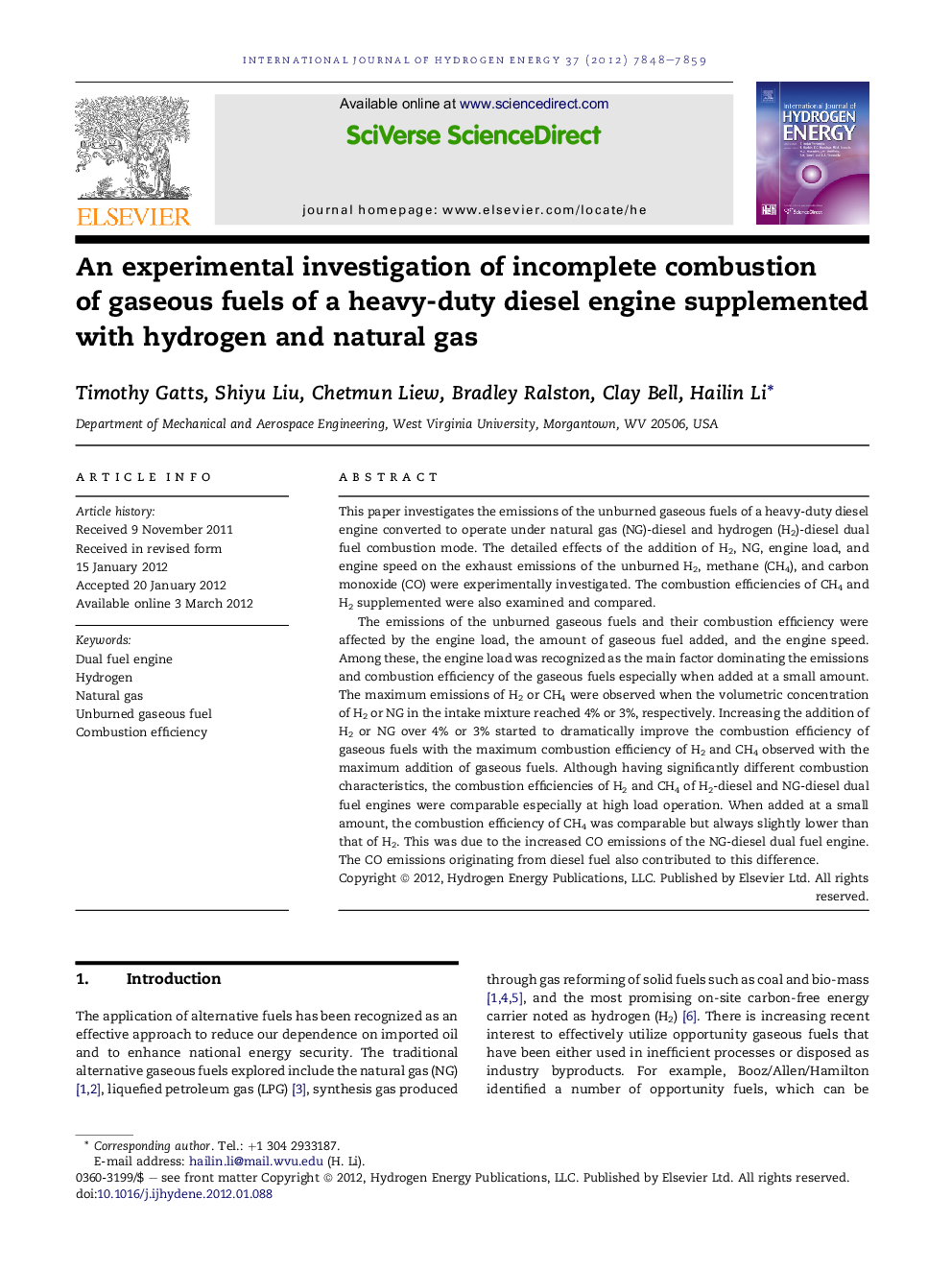| Article ID | Journal | Published Year | Pages | File Type |
|---|---|---|---|---|
| 1278588 | International Journal of Hydrogen Energy | 2012 | 12 Pages |
This paper investigates the emissions of the unburned gaseous fuels of a heavy-duty diesel engine converted to operate under natural gas (NG)-diesel and hydrogen (H2)-diesel dual fuel combustion mode. The detailed effects of the addition of H2, NG, engine load, and engine speed on the exhaust emissions of the unburned H2, methane (CH4), and carbon monoxide (CO) were experimentally investigated. The combustion efficiencies of CH4 and H2 supplemented were also examined and compared.The emissions of the unburned gaseous fuels and their combustion efficiency were affected by the engine load, the amount of gaseous fuel added, and the engine speed. Among these, the engine load was recognized as the main factor dominating the emissions and combustion efficiency of the gaseous fuels especially when added at a small amount. The maximum emissions of H2 or CH4 were observed when the volumetric concentration of H2 or NG in the intake mixture reached 4% or 3%, respectively. Increasing the addition of H2 or NG over 4% or 3% started to dramatically improve the combustion efficiency of gaseous fuels with the maximum combustion efficiency of H2 and CH4 observed with the maximum addition of gaseous fuels. Although having significantly different combustion characteristics, the combustion efficiencies of H2 and CH4 of H2-diesel and NG-diesel dual fuel engines were comparable especially at high load operation. When added at a small amount, the combustion efficiency of CH4 was comparable but always slightly lower than that of H2. This was due to the increased CO emissions of the NG-diesel dual fuel engine. The CO emissions originating from diesel fuel also contributed to this difference.
► The combustion efficiencies of H2 and NG are comparable when burned in dual fuel engine. ► The combustion efficiency of gaseous fuel burned in dual fuel engine is dominated by engine load. ► The maximum high combustion efficiency of gaseous fuels is always observed at high load with the addition of large amount of gaseous fuel. ► The dramatic emissions of unburned gaseous fuels of dual fuel engine are not due to combustion instability.
